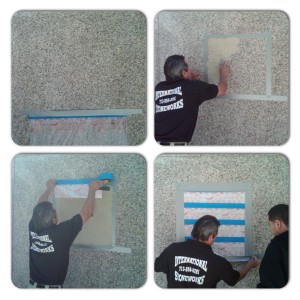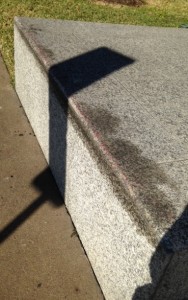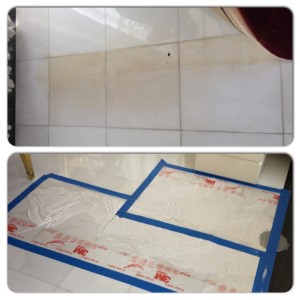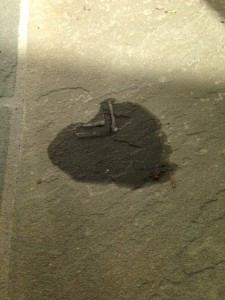What are stains?
A stain is a discoloration of the stone; however, the surface finish of the stone remains smooth.
(Not to be confused with an etch mark. An etch mark is a chemical burn that forms when acid, ammonia, or alcohol comes into contact with the calcium carbonate element that exists in certain natural stones. These marks look like the finish or the shine has been removed from the surface of the stone.)
The most common types of stains are:
- Oil-based (oils and grease)
- Organic (such as coffee or fruit)
- Metal (such as rust)
- Biological (algae, mildew or mold)
- Ink
- Paint
Best way to prevent stains: Seal your stone annually.
To prevent oil and organic stains, we recommend sealing your stone with Seal & Go® S or Seal & Go® W. These sealers are penetrating sealers, meaning they go into the pores of the stone and repel non-acid liquids like water, coffee, tea, grease, oil, etc. We recommend re-sealing your stone annually especially in kitchens and bathrooms. You may need to apply more than one application of the sealer.
If you want to learn more about how to apply Seal & Go® S or Seal & Go® W, check out our blog post, “Smooth Sealing.”
Removing stains

Residentially, we typically see oil and grease stains on kitchen countertops and on the floor near the cooktop. Candle wax is another culprit of oil stains.
Darker liquids such as wine or even urine from our pets can discolor natural stone.
Commercially, we tend to see oil stains around elevator call buttons due to oils from human hands and the oils that maintain the shine on metal call buttons. We also see oil stains outside of buildings on ramp edges due to skateboarders.

Knowing the type of stain will help identify which stain removal technique is needed. However please keep in mind that when stains are very deep, they may not be able to be removed.
If you have a surface stain on your stone you can apply a poultice on the stain.
Per the Marble Institute of America Glossary, a poultice is “a liquid cleaner or chemical mixed with white absorbent material to form a thick, stain removing paste. Some poultice options you have are Akemi Oil & Grease Remover Paste or SAC (Stain Absorbing Compound). Poultices need to be applied, covered with plastic wrap and blue tape and are usually left on the stain overnight or for a few hours. Clean the poultice off with neutral cleaners such as Lavenet and wait for the area to dry in order to see if the poultice was effective. You may have to poultice the stained area more than once.



1 Response
1 Pingback
[…] Brown, yellow and other colored stains need to be evaluated on a case by case basis. If you know the source of the stain (example you had metal furniture on your floor and you now see rust stains due to this metal furniture), please mention this important information when speaking with a stone restoration specialist. Certain surface stains can be drawn out using a poultice. […]